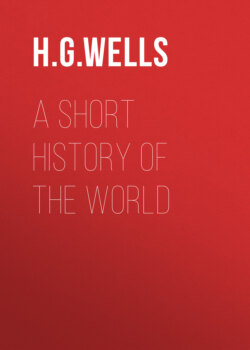Читать книгу A Short History of the World - H. G. Wells - Страница 41
На сайте Литреса книга снята с продажи.
SLAB OF LOWER PLIOCENE MARL
Discovered in Greece; it is rich in fossilized bones of early mammals
ОглавлениеThe Age of Reptiles lasted, it is now guessed, eighty million years. Had any quasi-human intelligence been watching the world through that inconceivable length of time, how safe and eternal the sunshine and abundance must have seemed, how assured the wallowing prosperity of the dinosaurs and the flapping abundance of the flying lizards! And then the mysterious rhythms and accumulating forces of the universe began to turn against that quasi-eternal stability. That run of luck for life was running out. Age by age, myriad of years after myriad of years, with halts no doubt and retrogressions, came a change towards hardship and extreme conditions, came great alterations of level and great redistributions of mountain and sea. We find one thing in the Record of the Rocks during the decadence of the long Mesozoic age of prosperity that is very significant of steadily sustained changes of condition, and that is a violent fluctuation of living forms and the appearance of new and strange species. Under the gathering threat of extinction the older orders and genera are displaying their utmost capacity for variation and adaptation. The Ammonites for example in these last pages of the Mesozoic chapter exhibit a multitude of fantastic forms. Under settled conditions there is no encouragement for novelties; they do not develop, they are suppressed; what is best adapted is already there. Under novel conditions it is the ordinary type that suffers, and the novelty that may have a better chance to survive and establish itself. …
There comes a break in the Record of the Rocks that may represent several million years. There is a veil here still, over even the outline of the history of life. When it lifts again, the Age of Reptiles is at an end; the Dinosaurs, the Plesiosaurs and Ichthyosaurs, the Pterodactyls, the innumerable genera and species of Ammonite have all gone absolutely. In all their stupendous variety they have died out and left no descendants. The cold has killed them. All their final variations were insufficient; they had never hit upon survival conditions. The world had passed through a phase of extreme conditions beyond their powers of endurance, a slow and complete massacre of Mesozoic life has occurred, and we find now a new scene, a new and hardier flora, and a new and hardier fauna in possession of the world.
It is still a bleak and impoverished scene with which this new volume of the book of life begins. The cycads and tropical conifers have given place very largely to trees that shed their leaves to avoid destruction by the snows of winter and to flowering plants and shrubs, and where there was formerly a profusion of reptiles, an increasing variety of birds and mammals is entering into their inheritance.
